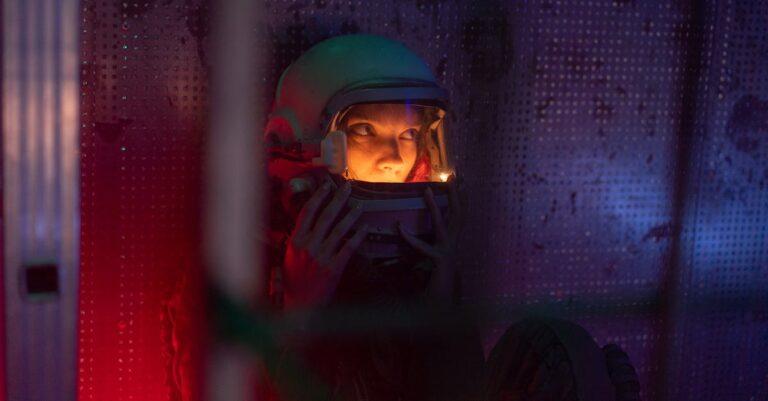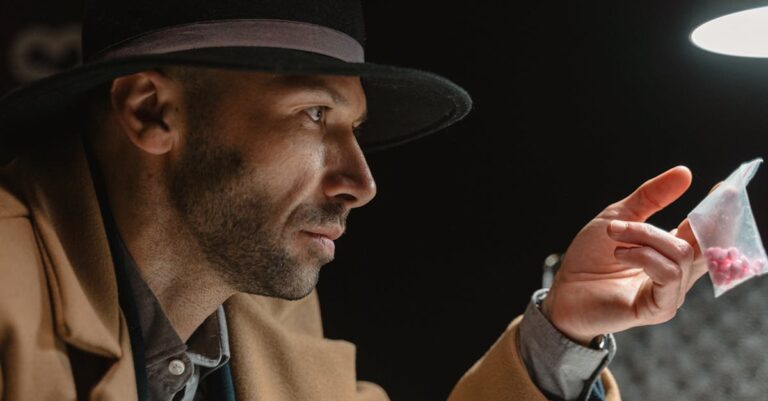
The air smelled of rust and static when Dr. Elara Voss stepped into the sublevel bunker. Her boots echoed against the steel floor, a sound that felt too loud for the silence surrounding her. The door sealed behind her with a hiss, and the lights flickered—once, twice—before steadying. She adjusted her gloves, the thick material muffling the tremor in her hands. This was it. The final test.
The chamber ahead was a cube of polished obsidian, its surface reflecting nothing but the glow of overhead lamps. At its center stood a device unlike anything she’d seen: a spiral of interlocking rings, each etched with symbols that shifted when she looked away. It pulsed faintly, like a heartbeat trapped in glass. Elara’s breath hitched. The data had been inconclusive, but the footage—those grainy, flickering images of the subject—had haunted her for weeks.
“You’re late,” a voice said. Elara turned. Dr. Kael Renner stood in the doorway, his lab coat stained with something dark. His eyes were tired, but they held a sharpness that made her stomach twist. “They’re watching,” he added, nodding toward the device. “You should’ve stayed above.”
“I need to see it,” she said. “Before it’s too late.”
Renner exhaled sharply, stepping closer. His voice dropped to a whisper. “You think this is about the subject? It’s about what happens when you look too long. The others—” He stopped, glancing at the spiral. “They didn’t come back. Not really.”
Elara’s pulse roared in her ears. She’d read the reports, the classified files buried in government archives. The subject—a humanoid entity, code-named Project Thalass, had been recovered from a derelict research station in the Arctic. Its behavior was erratic, its speech fragmented. But the real mystery was its effect on those who studied it. Scientists who’d spent weeks with it began to forget things—names, faces, even their own voices. Some stopped eating. Others claimed they could hear it talking in their heads.
“What’s it doing now?” she asked.
Renner didn’t answer. Instead, he reached into his coat and pulled out a small vial filled with a viscous, silver liquid. “This is what they’re using to stabilize it. A neural dampener. It’s not working.” He tilted the vial, watching the light catch on its surface. “The subject… it’s not just reacting to us. It’s learning.”
Elara’s throat tightened. “Then we need to understand it.”
“Or destroy it,” Renner said. “Before it understands us.”
The spiral pulsed again, brighter this time. Elara stepped closer, ignoring the cold that seeped into her bones. The symbols on the rings shifted faster now, forming patterns that made her head throb. She could feel something pressing against her mind, like a hand trying to pry open her skull. Her vision blurred, and for a moment, she saw it—a shape, vast and amorphous, flickering at the edges of her thoughts. It wasn’t human. It wasn’t anything she could name.
“Elara!” Renner’s voice cut through the haze. She stumbled back, gasping. The spiral dimmed, its glow fading to a dull ember.
“What did you see?” he asked.
She opened her mouth, but no words came. The image was gone, leaving only a hollow ache in her skull. She turned to him, her voice barely above a whisper. “It’s not a subject. It’s a key.”
Renner’s expression didn’t change, but his hands clenched into fists. “Then we’re already too late.”
—
The next day, Elara found the logs. They were hidden in a secure terminal, buried beneath layers of encryption she’d破解ed with a stolen access code. The files detailed the project’s origins—how Thalass had been discovered, how it had been brought here, how the first researchers had tried to communicate. The transcripts were fragmented, but one entry stood out: a recording of a conversation between two scientists, their voices trembling with awe and fear.
“It’s not speaking,” one said. “It’s… thinking. Directly. Like it’s in our heads.”
“Then we need to shut it down,” the other replied. “Before it turns us into something else.”
Elara’s hands shook as she closed the file. The implications were clear: Thalass wasn’t just a subject. It was a conduit, a bridge between something unknown and the human mind. And the longer they studied it, the more it reshaped them.
She returned to the chamber that night, alone. The spiral was still there, its rings spinning slower now, as if waiting. She reached out, her fingers brushing the cold surface. A surge of heat shot up her arm, and for a heartbeat, she was somewhere else—standing in a vast, dark expanse where stars flickered like dying embers. The shape from before was there, closer this time, its form shifting between light and shadow.
“Who are you?” she asked, her voice echoing in the void.
The entity didn’t answer. Instead, it reached out, and Elara felt something inside her unravel. Memories she hadn’t remembered surfaced: her mother’s laughter, the scent of rain on pavement, the way her father’s hands had felt when he held hers. But they weren’t hers. They belonged to someone else, someone… ancient.
She pulled back, gasping. The chamber was silent again, but the spiral pulsed once more, brighter than before. Elara knew then that she couldn’t stop. Not yet. There was more to uncover, more to understand. And if the others had failed, she would be the one to succeed—or disappear like them.
—
Weeks passed in a blur of experiments and sleepless nights. Elara worked with Renner, their partnership strained but necessary. They tested the dampener, trying to suppress Thalass’s influence, but it only seemed to grow stronger. The entity’s presence was everywhere now—whispers in the lab, shadows in the corners of her vision. She began to question her own thoughts, wondering which memories were hers and which had been planted.
One evening, Renner found her in the archives, poring over old photographs. They showed researchers standing in front of the bunker, their faces blurred by time. “This place wasn’t built for experiments,” he said. “It was built to contain something.”
“What?” she asked, not looking up.
He hesitated. “A doorway. Or a trap. We don’t know which.”
Elara closed the file. “Then we find out.”
They dug deeper, uncovering records of previous attempts to shut down the project. Each time, the researchers had vanished, their files erased, their names forgotten. The last entry was dated six months ago, a single line scrawled in shaky handwriting: “It’s inside us now. Don’t trust anyone.”
The realization hit her like a blow. Thalass wasn’t just affecting them—it was inside them, rewriting their thoughts, their identities. She thought of the others, the ones who had disappeared. Had they been destroyed? Or had they become something else, something that no longer recognized themselves?
“We have to leave,” Renner said. “Before it’s too late.”
“And go where?” she shot back. “This is the only place we know. If we run, it’ll follow us.”
He didn’t answer. The spiral pulsed again, and Elara felt a pull, a compulsion to return. She knew what she had to do.
—
The final test was simple: to step into the spiral and see what it would show her. Renner tried first, but he never came back. His body was found days later, curled in the corner of the chamber, his eyes open but unseeing. The others had left, afraid, but Elara stayed. She had to know.
She stepped into the spiral, and the world dissolved. She was no longer in the bunker, no longer in her body. She was everywhere and nowhere, a consciousness untethered from time. The entity was there, vast and endless, its form shifting with every thought. It didn’t speak, but it showed her everything: the origins of the project, the mistakes made, the choices that had led to this moment.
And then, a final image: a door. Not physical, but conceptual, a threshold between worlds. Thalass wasn’t a subject. It was a gateway. And Elara had to decide whether to close it or walk through.
She woke up in the chamber, her body trembling. The spiral was still there, its rings spinning slowly. She looked at the door, then at the device. The choice was hers.
Elara stepped forward, her hand outstretched. The spiral pulsed one last time, and she vanished into the light.


